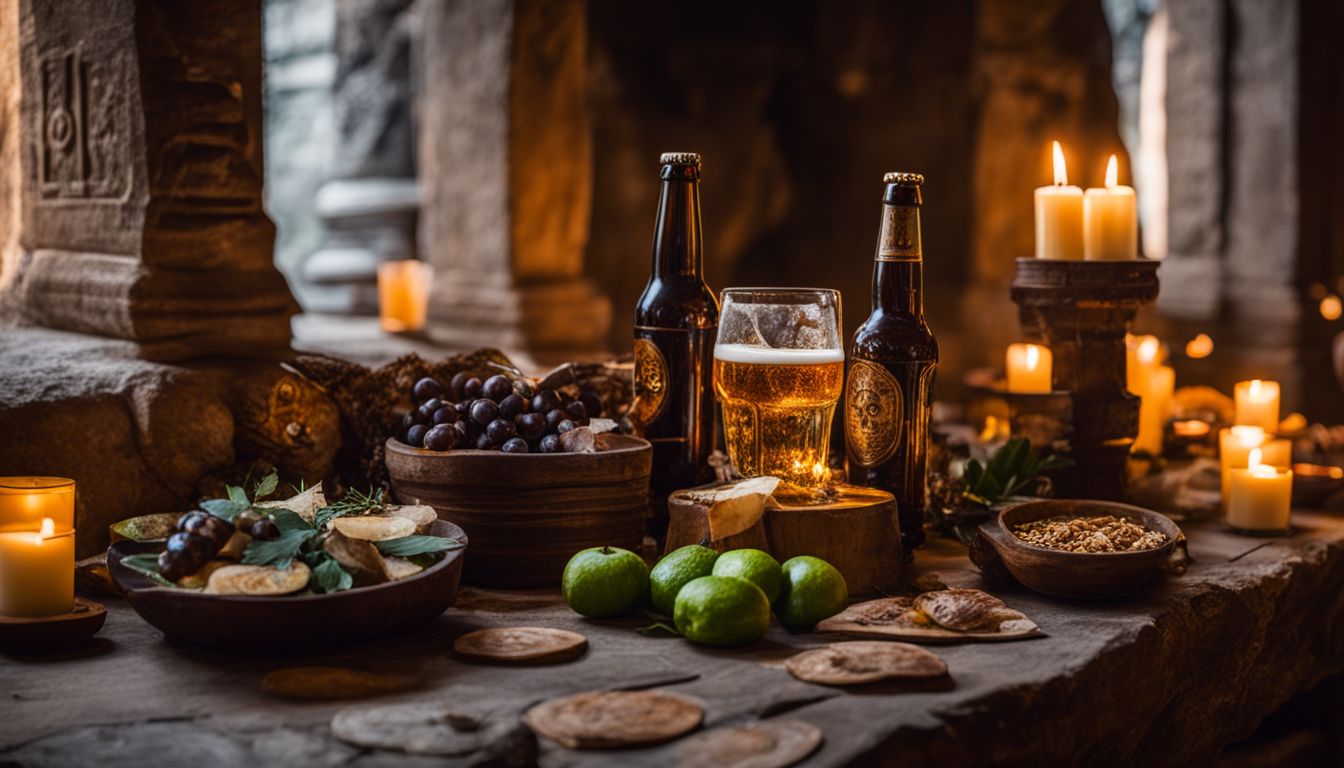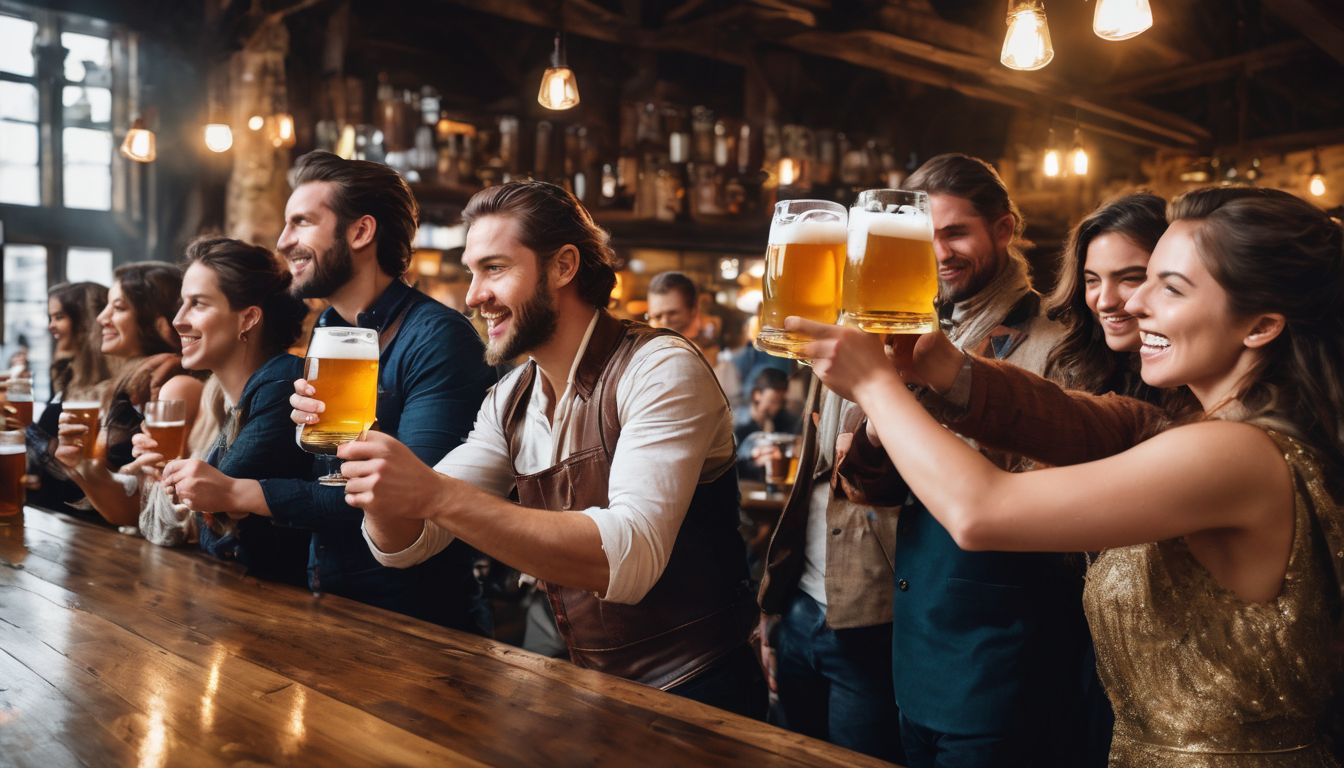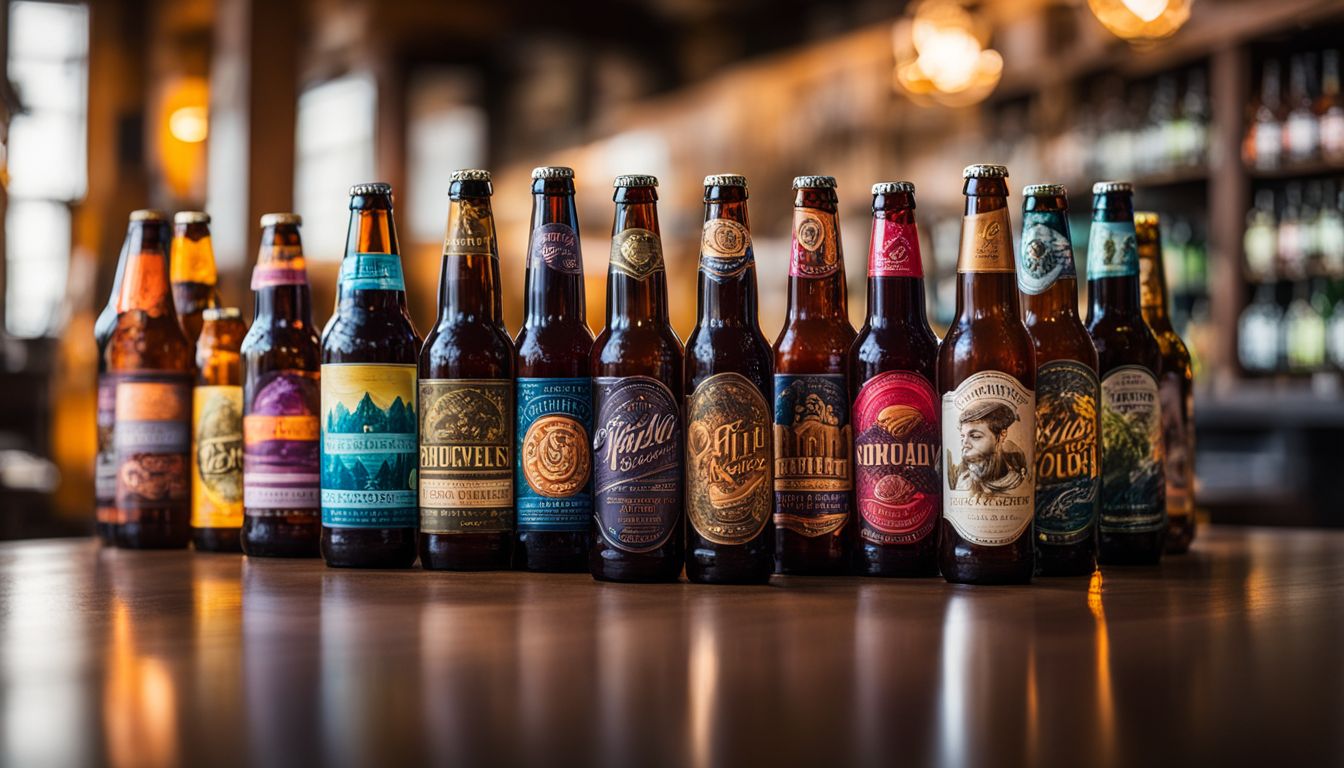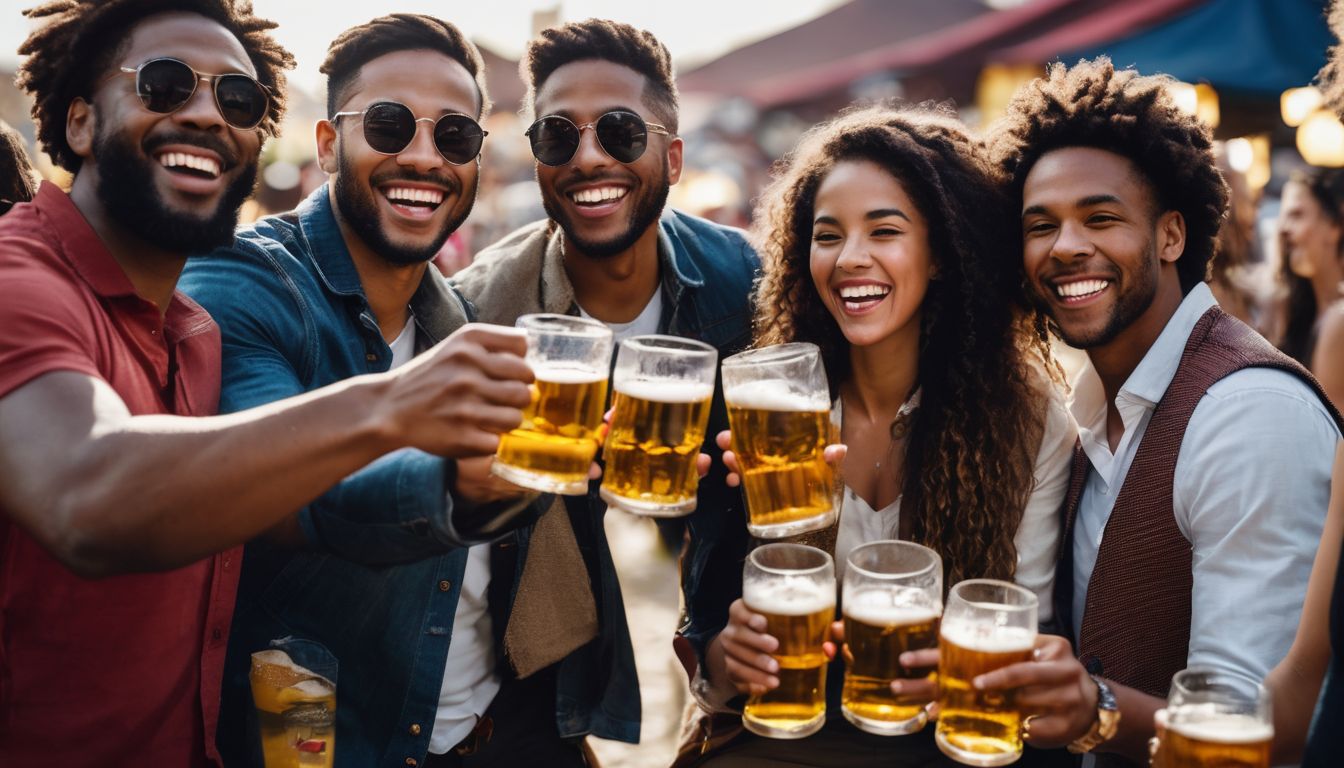As dedicated beer enthusiasts, we often raise our glasses for a toast without realising the deep cultural significance and historical roots this beverage holds. Did you know that beer, dating back to ancient Mesopotamia, has been a cornerstone of human culture for centuries? Our enlightening blog post takes you on an intoxicating journey across continents and through time, shedding light on how beer intersects with customs, traditions and even economies worldwide.
Intrigued to learn more? Let’s hop into the fascinating world of frothy beers!
Key Takeaways
- Beer has deep cultural significance and plays a big part in many cultures worldwide.
- Beer is not just a drink, it brings people together, shows our unique backgrounds, and creates lasting memories.
- Different brewing techniques and styles result in a wide variety of beer flavors to explore and enjoy.
- Beer festivals and celebrations promote local breweries, support the craft beer industry, and offer opportunities for people to connect over their love of beer.
The Role of Beer in African Culture and Traditions

Beer holds significant cultural importance in Africa, serving as a social and communal beverage used in religious and ritual ceremonies.
Cultural significance of beer

Beer is not just a drink. It has deep roots in our past and plays a big part in many cultures. Ancient people used beer for food, drink, and even as part of their faith. Today, we still see beer’s role at festivals all over the world.
These events let us share joy and make connections with others. Beer also shows where we come from, like how nobles once picked wine over beer to show they were higher class. As such, beer brings us closer by showing us both what makes us unique and what ties us together.
Beer as a social and communal beverage

Beer is more than just a drink. It has always been an important part of social gatherings and community celebrations. Throughout history, people have come together to enjoy the taste, companionship, and shared experiences that beer brings.
Whether it’s enjoying a pint at the local pub or raising a toast during special occasions, beer has the power to bring people closer and create lasting memories. In many cultures, beer drinking is seen as a way to connect with others and build relationships.
It is often enjoyed in groups, contributing to the sense of camaraderie and friendship. So next time you raise your glass for a cheers, remember that you’re not just enjoying a beverage – you’re participating in a long-standing tradition of socializing and coming together over beer.
Beer in religious and ritual ceremonies

Beer has a long history of being used in religious and ritual ceremonies. In ancient civilizations, brewing beer was not only a dietary staple but also an important part of religious practices.
Beer was believed to have spiritual significance and was often offered as a libation or sacrifice to the gods. It was seen as a way to connect with the divine and honor ancestors. Today, beer is still used in some religious ceremonies and rituals around the world, symbolizing unity, abundance, and celebration.
Beer Customs and Traditions Around the World

Different cultures across the globe have their own unique brewing techniques, resulting in a wide variety of beer styles and flavors.
Different brewing techniques

Beer is made using a variety of brewing techniques. Here are some different methods used to create unique flavors and styles:
- Fermentation: During this process, yeast converts sugars into alcohol and carbon dioxide, creating the bubbles in beer.
- Infusion: This technique involves adding crushed malt grains to hot water, allowing enzymes to convert starches into sugar.
- Boiling: After infusion, the mixture is boiled to sterilize it and extract bitterness from hops.
- Filtering: Some breweries filter their beer to remove any sediment or particles, resulting in a clearer appearance.
- Aging: Certain beers, like lagers, undergo a longer period of cold storage to develop smoothness and mellow flavors.
- Dry-hopping: To enhance aroma, brewers add additional hops during fermentation or aging stages.
Unique beer styles and flavors

Beer comes in a wide variety of unique styles and flavors. Here are some interesting ones to try:
- Lager: This is a type of beer that is fermented and conditioned at low temperatures. It has a crisp and clean taste.
- Stout: If you like dark, strong beers, then stout is for you. It has a rich, roasted flavor with notes of coffee or chocolate.
- Ale: Ales are brewed with top-fermenting yeast, which gives them a fruity flavor. They can range from light and refreshing to bold and hoppy.
- Wheat beer: As the name suggests, wheat beer is made from wheat instead of barley. It has a smooth and creamy texture with hints of banana or clove.
- IPA (India Pale Ale): IPAs are known for their hoppy bitterness and floral aroma. They can be quite strong in flavor and alcohol content.
- Sour beer: Sour beers have a tart taste due to the presence of certain bacteria or wild yeast during fermentation. They can be fruity, funky, or even vinegary.
Beer festivals and celebrations

Beer festivals and celebrations are an important part of beer culture around the world. People gather together to enjoy and appreciate the artistry and craftsmanship of brewing. Here are some interesting facts about beer festivals and celebrations:
- Beer festivals bring people together to celebrate their love for beer.
- Oktoberfest in Germany is the world’s largest beer festival, attracting millions of visitors every year.
- Other popular beer festivals include the Great American Beer Festival in the United States and the Czech Republic’s Pilsner Fest.
- These festivals feature a wide variety of beers from different breweries, allowing attendees to try new flavors and styles.
- In addition to beer tasting, these events often include live music, food stalls, and other entertainment options.
- Some beer festivals also host competitions for homebrewers or professional brewers to showcase their skills.
- Many countries have their own unique beer celebrations, such as Belgium’s Zythos Beer Festival and Brazil’s Mondial de la Bière Rio.
- These festivals not only celebrate beer but also promote local breweries and support the craft beer industry.
- It’s a great opportunity for beer lovers to meet like – minded individuals, share experiences, and create lasting memories.
The Economic Impact of Beer

Beer contributes significantly to the economy, creating jobs and fostering economic growth. Discover the fascinating details of how beer production and industry impact local economies worldwide.
Read on to explore the economic power of beer.
Beer production and industry

Beer production is a big industry that creates jobs and boosts the economy. It has been around for centuries and continues to grow in popularity. The process of making beer involves brewing, fermenting, and conditioning the ingredients like barley and hops.
There are different types of beers, such as lagers, stouts, and ales, each with its own unique flavors. Microbreweries have also become popular in recent years, offering craft beers made by independent brewers.
Beer production not only provides delicious beverages but also contributes to economic growth and job creation in communities worldwide.
Job creation and economic growth

Beer production and the beer industry as a whole have a significant impact on job creation and economic growth. When breweries are thriving, they need skilled workers to brew the beer, operate the machinery, handle packaging and distribution, and manage business operations.
This leads to employment opportunities for people in various roles such as brewers, sales representatives, marketing professionals, logistics experts, and more. In fact, the beer industry supports millions of jobs worldwide.
Additionally, beer tourism plays a vital role in boosting local economies. Many tourists visit cities known for their vibrant craft brewing scenes or famous beer festivals like Oktoberfest in Germany.
These visitors contribute to the local economy by spending money on accommodations, dining at local restaurants or pubs that serve beer, purchasing merchandise from breweries or craft beer shops.
Beer tourism

Beer tourism is a growing trend where people travel to different places to explore and experience the local beer culture. It allows beer enthusiasts to visit breweries, sample unique flavors, and learn about brewing techniques.
Beer festivals and pub tours are popular attractions for those interested in trying new beers and immersing themselves in the local drinking culture. This type of tourism also contributes to the economy by creating jobs in the hospitality industry.
So, if you’re a beer lover, consider adding beer tourism to your travel bucket list!
Beer and Food Pairings in Different Cultures

Different cultures have their own traditional beer and food pairings, such as pairing stouts with oysters in Ireland or wheat beers with sausages in Germany.
Traditional beer and food pairings
Beer has been enjoyed alongside food for centuries, and different cultures have their own traditional beer and food pairings. Here are some examples:
- In Germany, bratwurst sausages are often paired with a refreshing pilsner or a malty Oktoberfest beer.
- In Belgium, mussels cooked in beer are served with a fruity Belgian ale like a Witbier or a Tripel.
- In Mexico, tacos and other spicy dishes are commonly accompanied by a light and crisp Mexican lager.
- In England, fish and chips go hand in hand with a smooth and creamy stout or an English bitter.
- In Japan, sushi is often enjoyed with a clean and light lager to complement the delicate flavors.
Emerging beer and food trends
Beer and food pairings have become a popular trend among beer enthusiasts. When it comes to enjoying a delicious meal, here are some emerging beer and food trends to try:
- Craft Beer and Artisanal Cheese Pairings: The complex flavors of craft beers complement the creamy and tangy flavors of artisanal cheeses. Try pairing a hoppy IPA with sharp cheddar or a fruity saison with a soft brie.
- Beer-Infused Desserts: Brewers are getting creative by incorporating beer into desserts like stout brownies or IPA-infused ice cream. These unique treats add depth and richness to traditional sweet flavors.
- Global Fusion Cuisine: Chefs are experimenting with incorporating different beer styles into their dishes, creating unique flavor profiles. For example, using a Belgian witbier in a spicy Thai curry or pairing a smoky porter with barbecue pulled pork.
- Beer Cocktails: Mixologists are combining the best of both worlds by blending spirits and beers to create refreshing cocktails. Try a shandy made with wheat beer and lemonade or a michelada made with Mexican lager, lime juice, and spices.
- Vegetarian and Vegan Pairings: With the rise of plant-based diets, brewers are creating beers specifically designed to pair well with vegetarian and vegan dishes. Look for beers that have fruity or herbal notes that complement vegetable-based meals.
- Sour Beers and Seafood: The funky and tart flavors of sour beers pair exceptionally well with seafood dishes like oysters or ceviche. The acidity of the beer helps cut through the richness of the seafood.
- Spicy Food and Hops: When it comes to spicy dishes, hoppy beers can help balance out the heat. The bitterness from hops can provide relief from spicy flavors while enhancing the overall taste experience.
Beer as an ingredient in cooking
Beer isn’t just for drinking – it can also be used as an ingredient in cooking! Adding beer to recipes can enhance the flavors and add depth to dishes. For example, beer can be used in marinades for meats, like steak or chicken, to help tenderize them and infuse them with a unique flavor.
It can also be used in batters for frying foods, such as fish or onion rings, to create a light and crispy texture. Additionally, beer can be included in soups and stews to give them a rich and hearty taste.
So next time you’re in the kitchen, consider reaching for a bottle of beer to elevate your culinary creations!
Preserving and Promoting Beer Culture

Efforts to preserve and promote beer culture include initiatives to support local and craft breweries, as well as educational programs aimed at increasing awareness about the customs and traditions associated with beer.
Cultural preservation efforts
- Organizations like the Brewers Association and BeerAdvocate work to preserve traditional brewing techniques and beer styles.
- Beer museums, such as the Czech Beer Museum in Prague, educate visitors about the history and cultural significance of beer.
- Craft breweries around the world focus on creating beers that honor local traditions and ingredients.
- Beer festivals showcase traditional brewing customs, allowing people to experience different cultures through beer.
- Historical breweries, like the Trappist Monastery breweries in Belgium, continue to brew beer using centuries-old methods.
- Beer enthusiasts form online communities to share knowledge and promote awareness of beer customs and traditions.
- Institutes and universities offer courses on beer culture, helping to educate a new generation of brewers and beer lovers.
- Traditional recipes for regional beers are preserved by homebrewers who pass down their knowledge through generations.
- Local governments designate certain beers as cultural heritage items, protecting them from changes or commercialization.
- Books and documentaries explore the cultural significance of beer, spreading awareness and fostering appreciation.
By celebrating and preserving these cultural efforts, we can continue to enjoy the rich customs and traditions associated with beer for generations to come.
Promoting local and craft breweries
Local and craft breweries play a vital role in preserving beer culture and traditions. These breweries offer unique flavors and styles that showcase the artistry and craftsmanship of small-scale brewing.
By supporting local and craft breweries, we not only contribute to the economic growth of our communities but also help to sustain traditional brewing techniques that have been passed down through generations.
Additionally, these breweries often prioritize using locally sourced ingredients, which helps to support local farmers and businesses. So next time you’re looking for a beer to try, consider seeking out your neighborhood brewery or exploring the offerings from independent brewers – you might just discover a new favorite brew while supporting your local community at the same time!
Education and awareness about beer customs and traditions
To truly appreciate beer, it’s important to understand its customs and traditions. Learning about the history of beer brewing and different cultural practices associated with it can enhance your enjoyment of this beloved beverage.
Did you know that beer has been part of human culture for centuries? It has played a significant role in religious ceremonies, community celebrations, and social gatherings. By educating ourselves about these customs and traditions, we can gain a deeper appreciation for the artistry and craftsmanship behind every pint we enjoy.
Conclusion

Beer is so much more than just a drink. It’s a cultural celebration filled with customs and traditions that bring people together. From ancient ceremonies to modern festivals, beer has played an important role in societies around the world.
As we continue to preserve and promote this rich beer culture, let us raise our glasses and toast to the artistry, craftsmanship, and happiness that beer brings to our lives. Cheers!
FAQs
1. What are some customs and traditions associated with beer?
Some customs and traditions associated with beer include toasting, cheers-ing before drinking, certain glassware used for specific types of beers, and beer festivals celebrating local or regional brewing styles.
2. How is beer made?
Beer is made through a process called brewing, which involves fermenting grains (usually barley) with water and adding hops for flavor. Yeast is then added to the mixture to facilitate fermentation, converting sugars into alcohol and carbon dioxide.
3. Can I drink beer if I don’t like the taste?
If you don’t enjoy the taste of regular beer, there are various flavored beers available that might be more to your liking. Additionally, you can try different styles or brands of beers as they can have distinct flavors.
4. Are there any health benefits associated with moderate beer consumption?
Moderate beer consumption (one drink per day for women and up to two drinks per day for men) has been linked to potential health benefits such as reducing the risk of heart disease, increasing bone density due to its silicon content, and providing certain nutrients like B vitamins from its ingredients. However, it’s important not to exceed recommended limits as excessive alcohol consumption can harm health.
